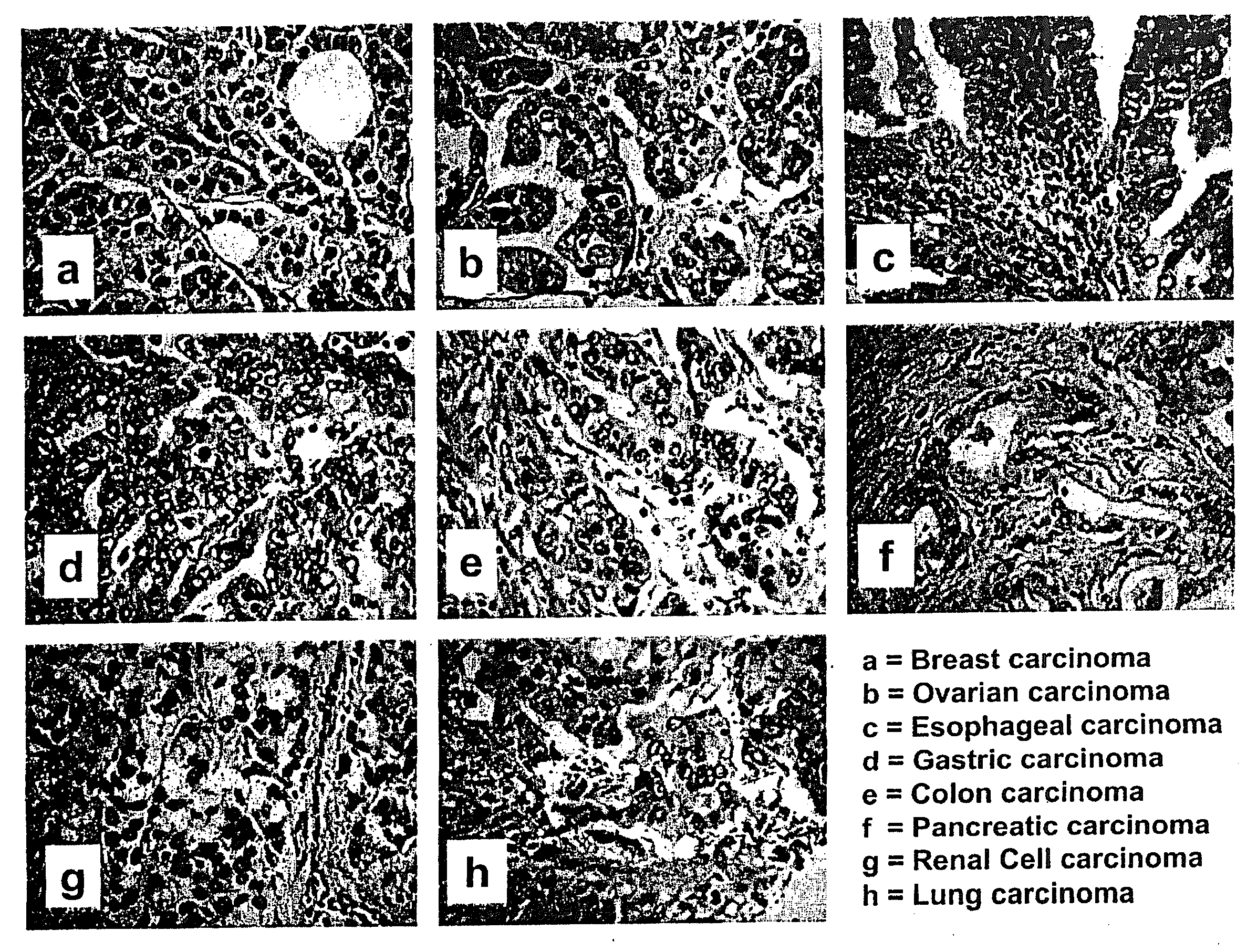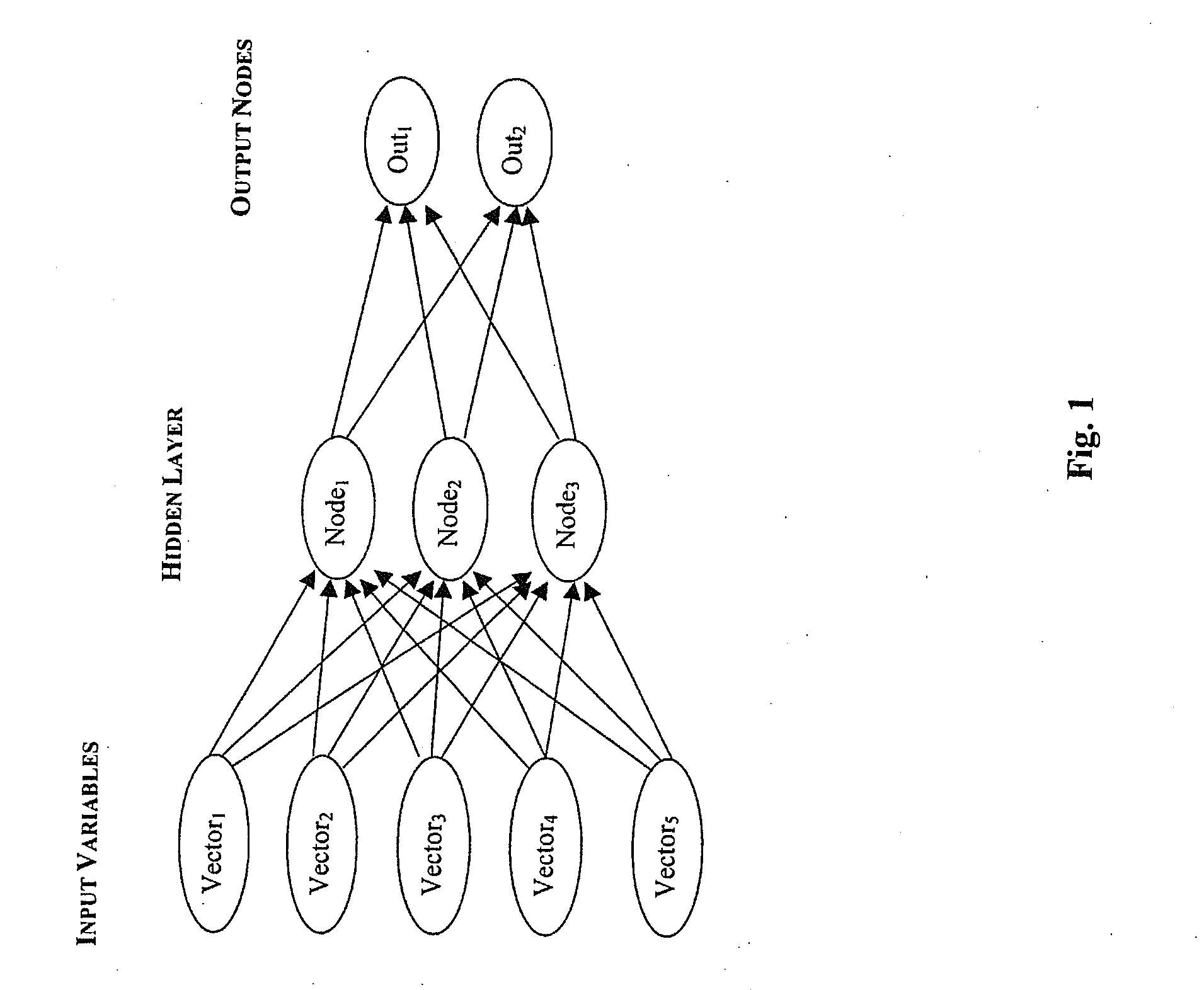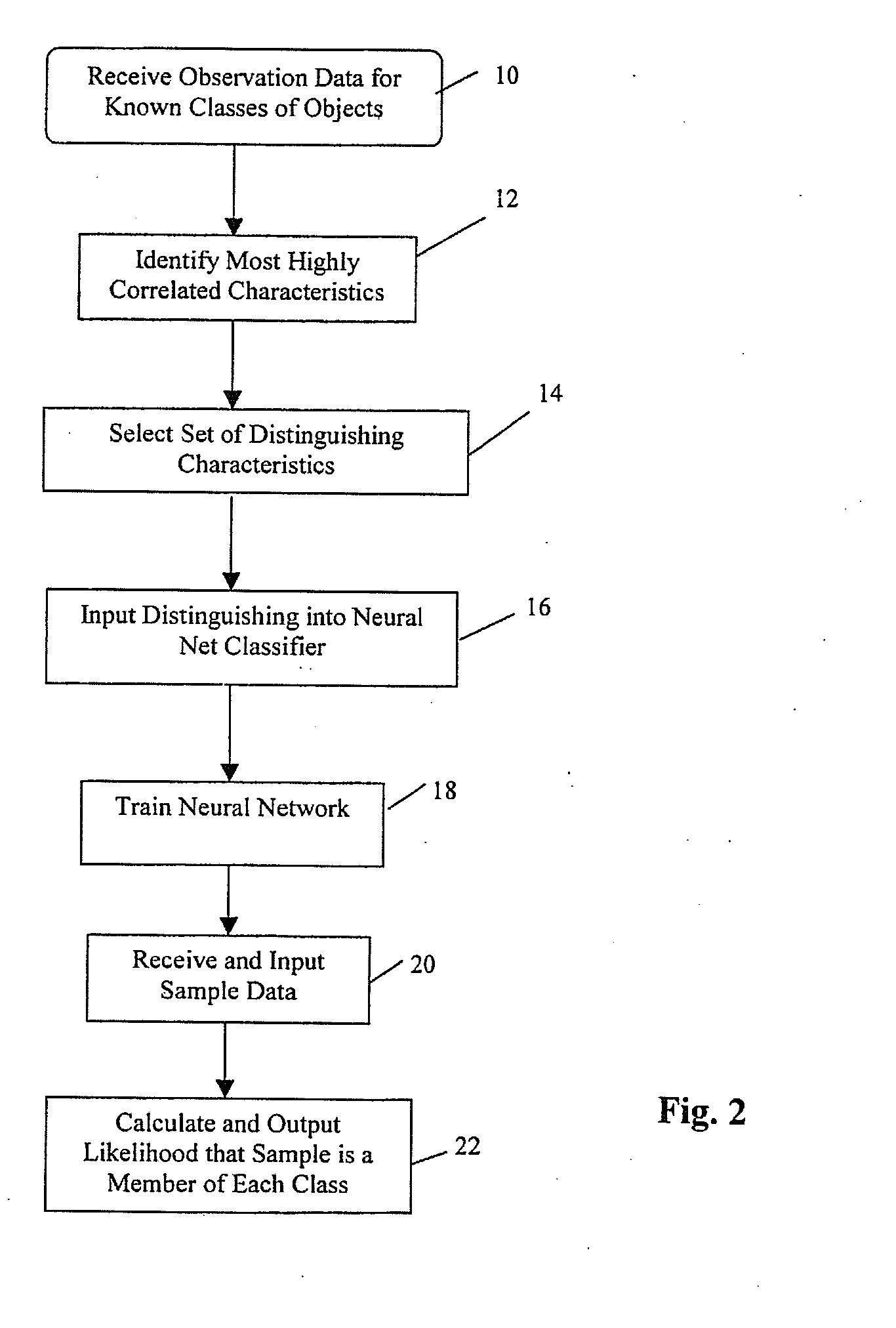Tissue classification method for diagnosis and treatment of tumors
a tumor and tissue classification technology, applied in the field of informational computation methods for classifying objects, can solve problems such as colon cancer metastasis, difficult differential diagnosis of a number of cancers, and insufficient molecular fingerprinting resolution techniques
- Summary
- Abstract
- Description
- Claims
- Application Information
AI Technical Summary
Benefits of technology
Problems solved by technology
Method used
Image
Examples
example 1
[0048]Prior art approaches to tumor classification are limited in predication capability in part because each study selected only a small number of genes sufficient to approximate classification of a restricted set of tumor samples. To evaluate this approach, a spotted cDNA microarray containing 32,448 elements (10 exogenous controls printed 36 times, 3 negative controls printed 6 times, 31872 human cDNAs representing 30849 distinct transcripts—23936 unique TIGR TCs and 6913 ESTs) was used to profile expression in eight different tumor types of similar histological appearance (FIG. 4). Histological classification of tumors is often extremely difficult, as the morphology of the cells is often indistinguishable in tumors from diverse organ sites. Routine histomorphology cannot easily be used to distinguish the sites of origin of the depicted adenocarcinomas (FIG. 4, a-h). Total RNA was prepared from adenocarcinomas (n=10) derived from 8 different sites of origin (breast, pancreas, lun...
example 2
[0050]In recognition of the fact that no a priori reason exist to group genes for the purpose of tissue classification, a non-parametric statistical screen was combined with an artificial neutral network (Khan, J. et al. Classification and diagnostic prediction of cancers using gene expression profiling and artificial neural networks (ANN). Nat Med 7, 673-9. [2001]) to assign weights to individual genes that could then be used for classification. An artificial ANN is versatile algebraic construct that can approximate almost any nonlinear relationship. It is an ideal tool to apply to classification problems associated with complex microarray datasets because it requires no predetermined assumptions about the relative importance of any particular gene in the classification. However, before the ANN can be used for classification, it must first be trained to perform this function. Training uses input gene expression vectors that are paired with target vectors representing tumors with de...
example 3
[0052]Based on the positive results of the classification method used in Example 2, the method was extended to develop a more general, clinically applicable and robust classifier. The approach used is summarized in FIG. 5, depicting the process of classification in four stages: data acquisition, normalization and scaling, statistical screening and training a neural network. Data Acquisition involves a literature search for suitable published microarray data and the collection of this and newly generated data into a microarray database. Normalization and Scaling comprises calculation of an average gene expression value across a reference sample for two Affymetrix™ chip types, gene by gene scaling between Affymetrix™ chip types and the gene by gene scaling between Affymetrix™ chip types and the spotted microarray. A non-parametric statistical screening is used to find a subset of genes correlative with tumor type. This set of genes is then used to train and validate an artificial neur...
PUM
 Login to View More
Login to View More Abstract
Description
Claims
Application Information
 Login to View More
Login to View More - R&D
- Intellectual Property
- Life Sciences
- Materials
- Tech Scout
- Unparalleled Data Quality
- Higher Quality Content
- 60% Fewer Hallucinations
Browse by: Latest US Patents, China's latest patents, Technical Efficacy Thesaurus, Application Domain, Technology Topic, Popular Technical Reports.
© 2025 PatSnap. All rights reserved.Legal|Privacy policy|Modern Slavery Act Transparency Statement|Sitemap|About US| Contact US: help@patsnap.com



